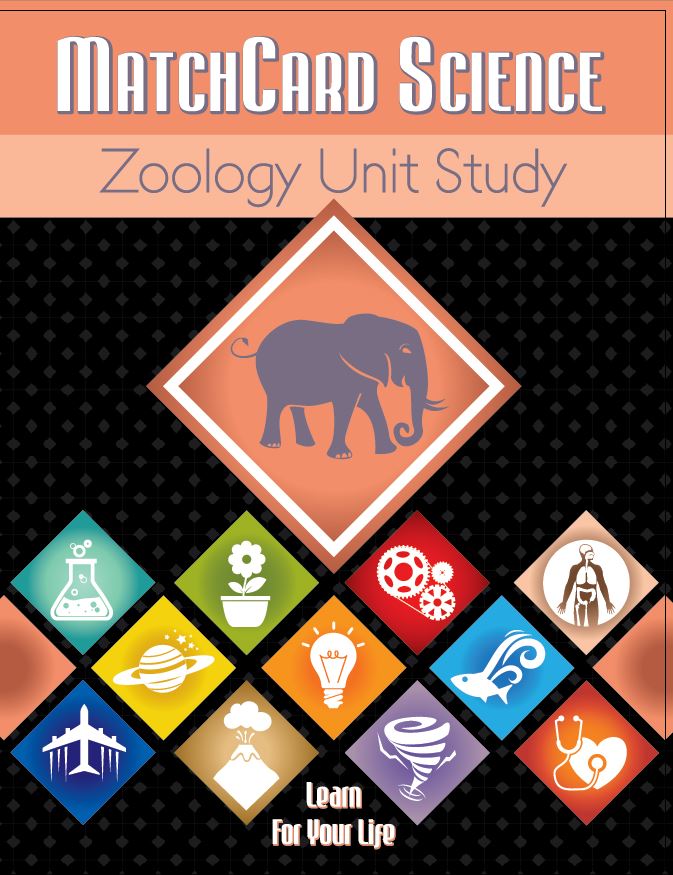Biology Tree of Life
The Biology Tree of Life lists major kingdoms with different characteristics.
Free Download Below
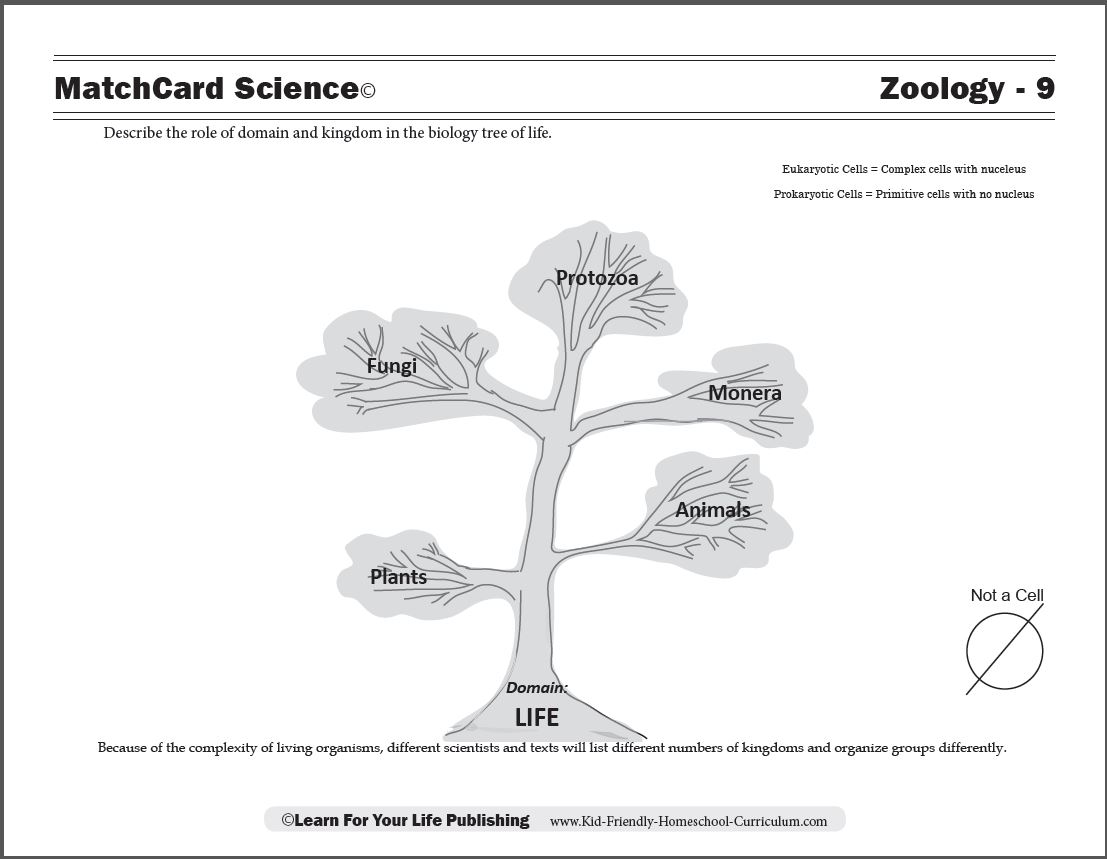
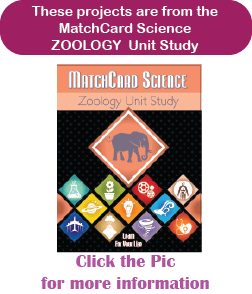
MatchCard Science Tree of Life Worksheet
Objective: Describe the role of domain and kingdom in the biology tree of life.MatchCard: Download below.
MatchCard Information Pieces describe five different kingdoms: plant, animal, fungi, monera, and protozoa.
Print the Tree of Life MatchCard


Click image to go to download.
This is MatchCard #9 of the Zoology Unit Study. Find more information on MatchCard Science below.
Major Teaching Concepts
This information builds on MatchCard #8, scientific classification. In that lesson students learned how to trace the species of domestic dogs from kingdom, phylum, class, order, family, genus, species.
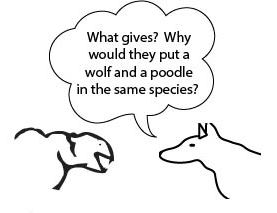
Complexity of Organisms
Plant and Animal kingdoms are insufficient for all living things and so the classification system has become more complex. In fact, there are multiple classification systems out there, some in greater favor in some countries or sub-specialties of biology. The concept to convey to your student is that the classification system has expanded since Linnaeus introduced "plants" and "animals" as the two kingdoms. There are a greater number of kingdoms and there is disagreement as to what constitutes a kingdom.Domain
Domain has become the largest sub-group on the classification system, whereas kingdom previously was the largest and broadest category. All living things are classified under the domain of "life".Single Celled Organisms
This lesson introduces students to the existence and variety of single celled organisms. This is by no means a comprehensive list of the types of single-celled organisms, but an introduction for kids in upper elementary and middle school to microbiology.Students should become aware of the fact that these organisms invisble to the human eye have changed our understanding of life. There are the protozoa which first challenged the scientific community with their characteristics that are partly plant-like (photosynthesis) and partly animal-like (movement and ingestion.)
Tree of Life
The tree of life is an interesting concept as it has its roots in Genesis 1, but was also used by Darwin to describe how organisms evolved. A comparison of these two philosophies can be discussed and compared.Teaching the Tree of Life for Kids
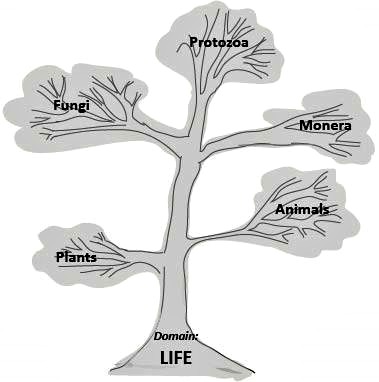
Guessing Game: Domain
Using MatchCard 8 and the classification system, ask students to guess what DOMAIN plants and animals belong under. "Domain" is a larger or broader group than kingdom.After “Life” is guessed, ask what other domain(s) might exist.
Scavenger Hunt: Fungi
Give time to brainstorm what other living things are on the tree of life besides plants and animals.Then show the student copy of the MatchCard (without answers.) Look at the three other kingdoms.
How does a fungus differ fron a plant? Give ten minutes for a scavenger hunt to find information (print or internet) or specimens of fungi.
Fungi Fun
Add a small amount of moisture to a piece of bread, put it in a sealed plastic bag, leave it in a warm spot, and come back in a few days.Show and Tell: Monera and Protozoa
Introduce protozoa and monera as animal-like unicellular organisms.Monera - which include bacteria - have prokaryotic cells that are simple and have no nucleus (like the brain of the cell.)
Protozoa have characteristics which are partially like animals and partially like plants.
Give another ten minute scavenger hunt to find information on protozoa, bacteria, or archaea.
Give each student a few minutes to do a show and tell on one organism they learned about.
Eukaryotic vs Prokaryotic
The different parts of a cell will be studied in MatchCard #12. At this stage, the primary thing the student needs to learn is that the prokaryotic cells are simpler and do not have a nucleus which functions as the brain on the cell.Four of the kingdoms have Eukaryotic or complex cells with a nucleus. It might help to remember that "bacteria are not very smart."
Virus
Viruses are just mentioned in this lesson because they are commonly referred to.A virus is not a cell. It consists of genetic material that invades a cell and uses the cells genes to replicate itself. Viruses cannot reproduce by themselves.
Lapbooking
A lapbook is a popular way for students to demonstrate what they have learned. Have fun developing a lapbook that gives information on the five different kingdoms.Under the Microscope
This lesson introduces students to some of the variety of species that do not exist in the kingdoms of plants and animals. These organisms are primarily microscopic (though some fungi can be seen in the environment.)This is an ideal time to use the microscope if you have one or have access to one. Prepared slides can be obtained for fungi, protozoa, and bacteria.
MatchCard Science
How To Use MatchCards

Download the FREE MatchCard Science Instructor's Guide and see how MatchCards can make building their science knowledge base fun.
12 Science Unit Studies

Chemistry is only one of twelve complete unit studies for kids in 3rd to 8th grade.
Comprehensive objectives, hands-on projects, suggested science fair experiments, and the fun game-like MatchCards keep them interested in learning science. See all twelve MatchCard Science Unit Studies.
About Our Site
Hands-On Learning



